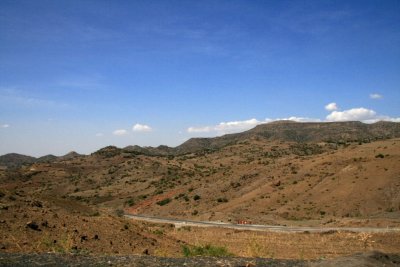 The scenery around Lalibela is dramatic. |
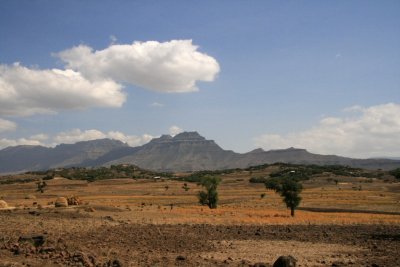 This is the tallest mountain in the area, and home to Asheton Maryam Monestary. |
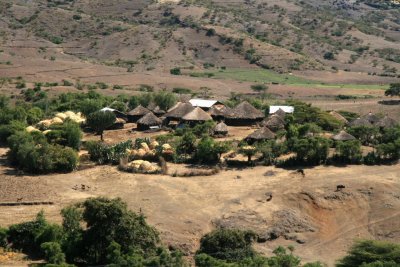 |
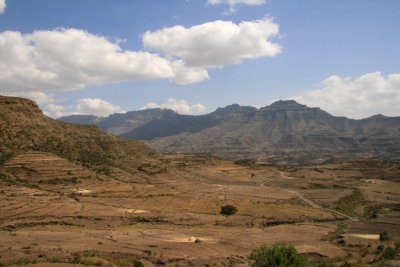 |
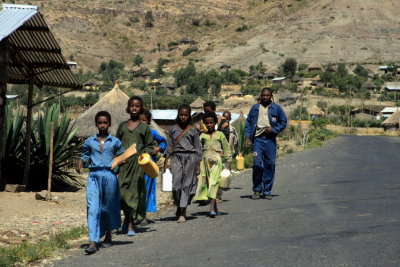 |
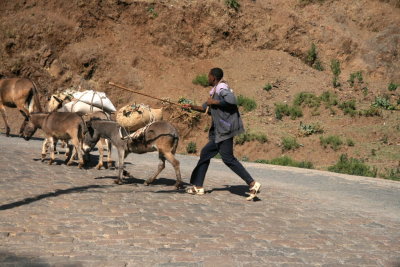 The roads near Lalibela carry more pedstrians and animals than automobiles. |
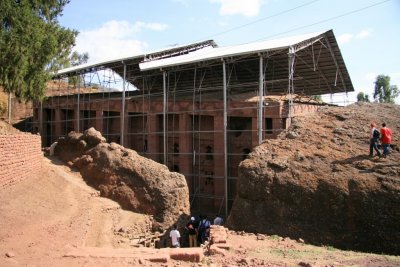 Bet Medhane Alem Church, the largest monolithic rock-hewn church in the world. |
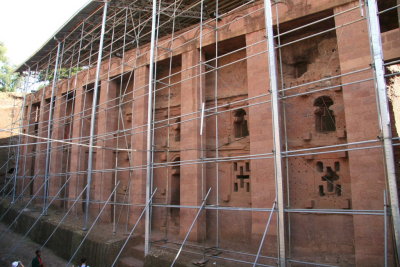 Bet Medhane Alem |
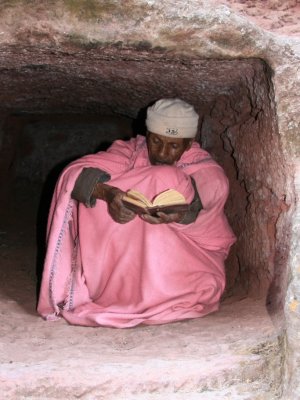 A priest reads in a nook carved into the stone wall surrounding the churches. |
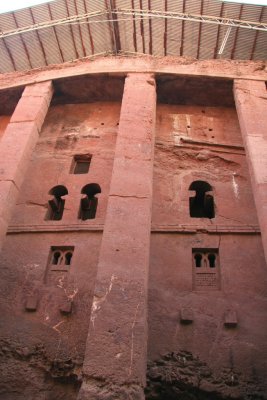 Bet Medhane Alem. Note upper windows with design reminiscent of the top of the pre-Christian Ezana Stela in Axum. |
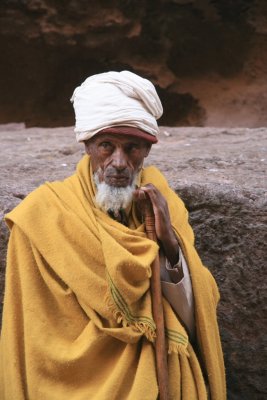 |
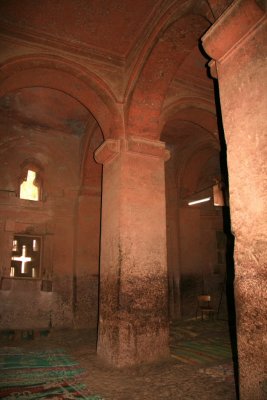 Interior of Bet Medhane Alem |
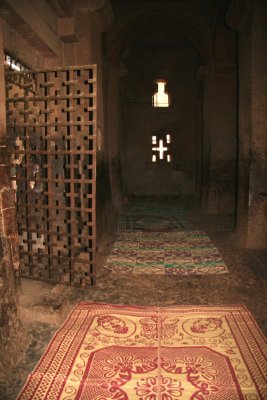 |
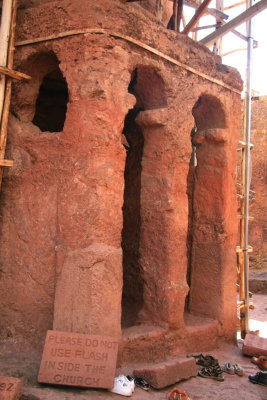 Entrance to Bet Maryam Church |
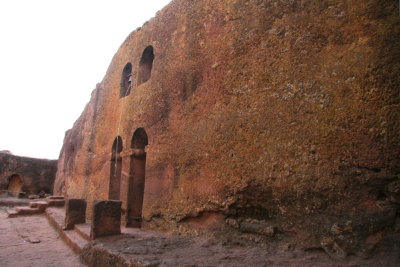 Wall surrounding some of the northwestern cluster of churches in Lalibela |
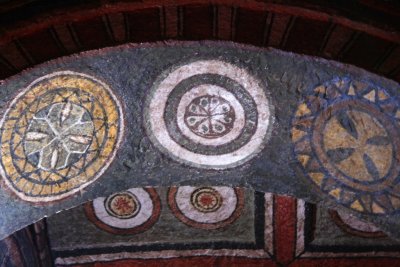 Intricate paintings on the ceiling of Bet Maryam Church |
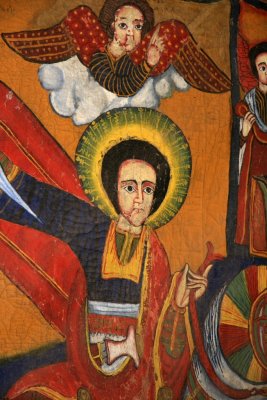 |
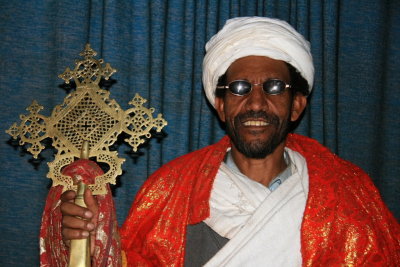 A priest shows off a traditional cross. The sunglasses, we later learned, are worn because of camera flashes. |
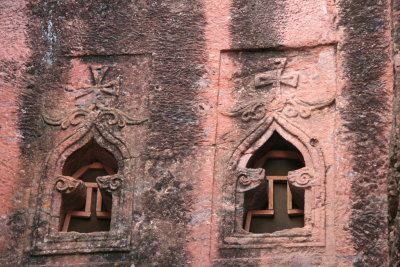 Intricate window designs |
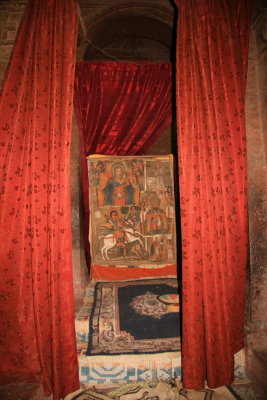 All of the churches contain paintings within. |
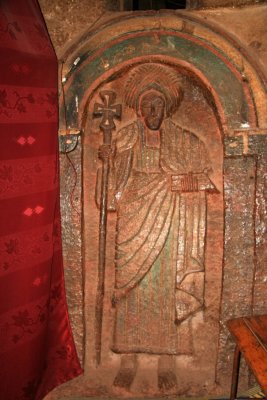 Carving of an Ethiopian saint inside Bet Golgotha. This is the only church in Lalibela in which women are not permitted. |
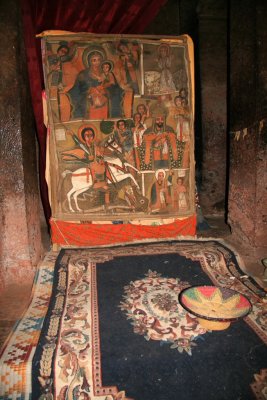 |
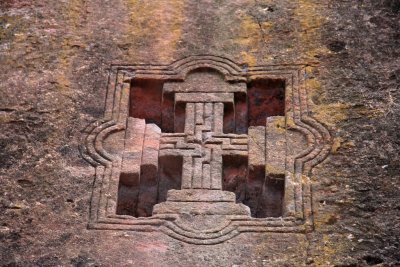 A beautiful cross-shaped window |
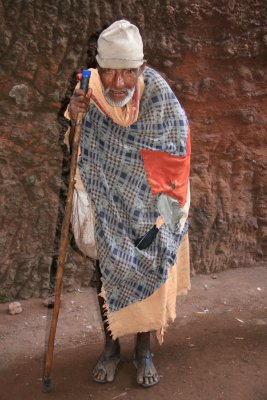 |
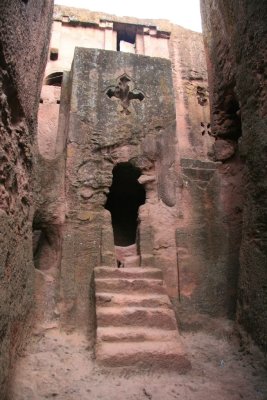 |
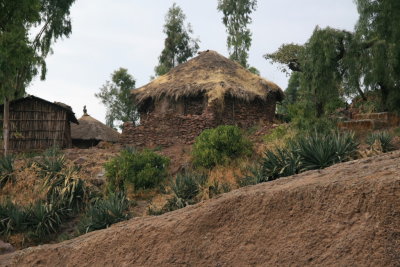 Typical Lalibela house construction |
 The mountain home of Asheton Maryam Monestary, as seen from Lalibela. The Monestary sits in the "notch" in this mountain, about 2,000 feet above Lalibela. |
 Scenery on the ascent to Asheton Maryam |
 A small village on the trail up to Asheton Maryam |
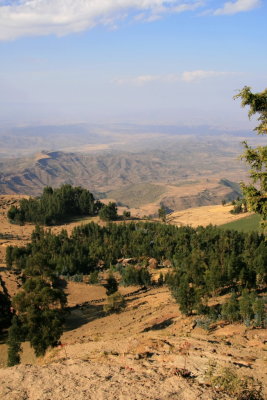 Visiting Asheton Maryam involves climbing from Lalibela (8,200 feet) to the Monestary, which lies at 10,135 feet. |
 Inside Asheton Maryam, a priest uses a cross to cure a local resident. The ancient cross, said to date back to the 12th century along with the monestary itself, is reputed to have healing powers. |
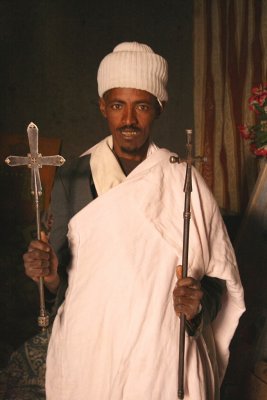 Asheton Maryam's ancient crosses |
 Inside Asheton Maryam |
 A priest inside Asheton Maryam |
 Asheton Maryam has a collection of books said to be at least 500 years old. |
 |
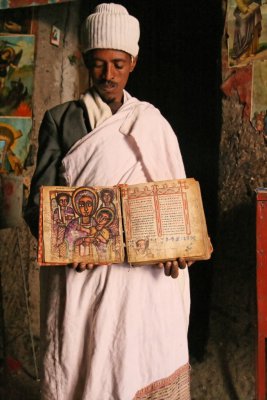 |
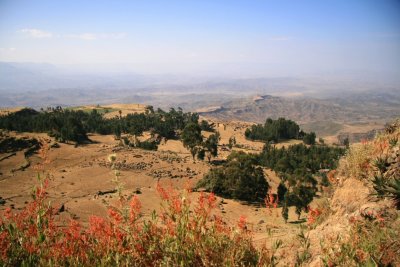 Stunning scenery on the trail from Lalibela to Asheton Maryam |
 |
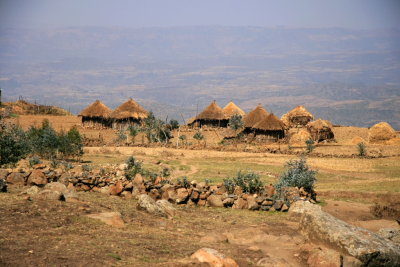 A plateau halfway between Lalibela and Asheton Maryam houses a small village. |
 A local family works with hay and livestock |
 |
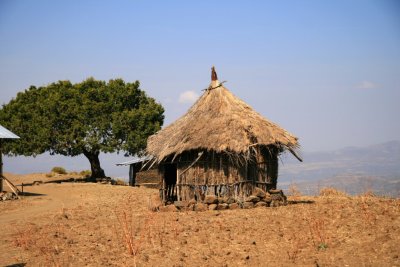 |
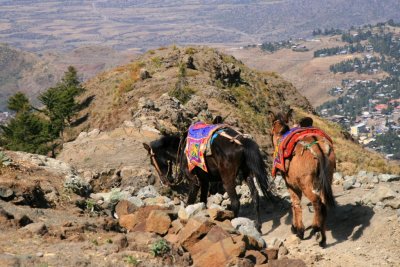 Our mules head down the rocky, steep trail to Lalibela. |
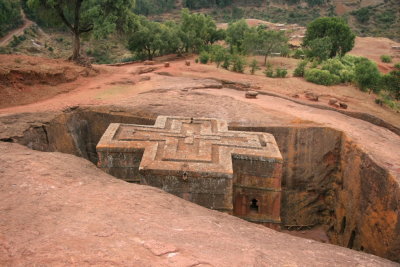 Bet Giorgis, the most famous rock-hewn church in Lalibela |
 Bet Giorgis |
 Entrance to Bet Giorgis |
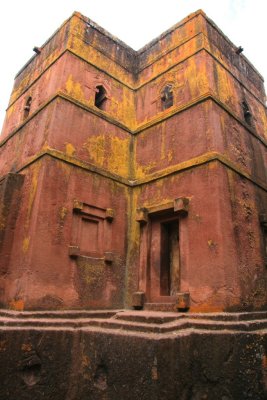 |
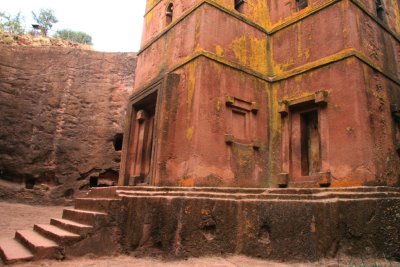 |
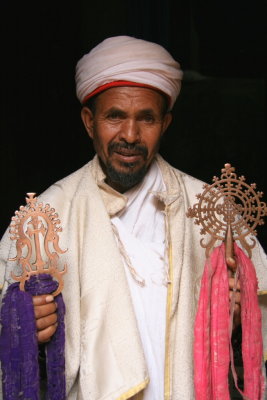 A priest displays the ancient crosses of Bet Giorgis Church |
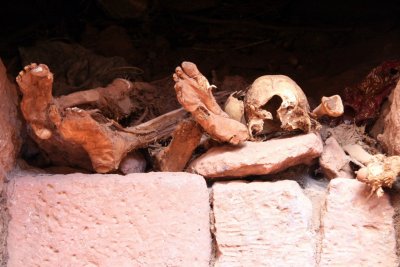 The remains of hermits in a wall nook near Bet Giorgis |
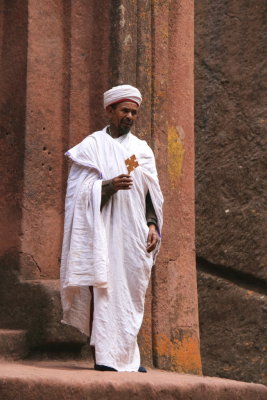 A priest at the entrance to Bet Giorgis |
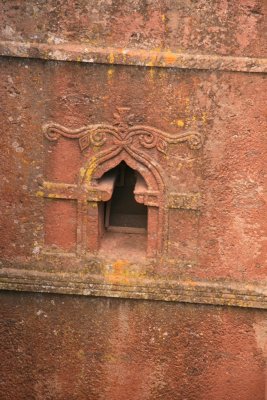 Carved window, Bet Giorgis |
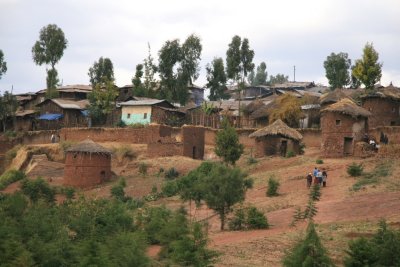 Residences in Lalibela |
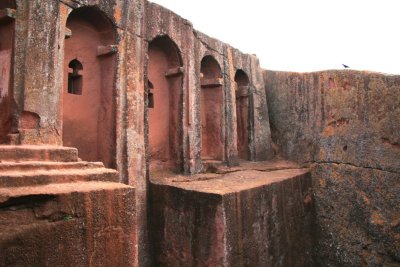 Bet Gebriel-Rafael in the southeastern cluster of churches in Lalibela |
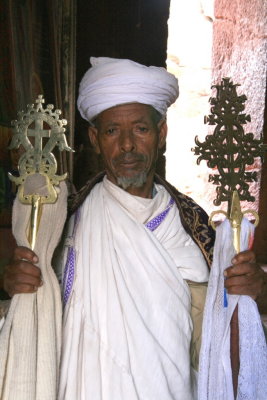 A priest shows us the crosses at Bet Gebriel-Rafael |
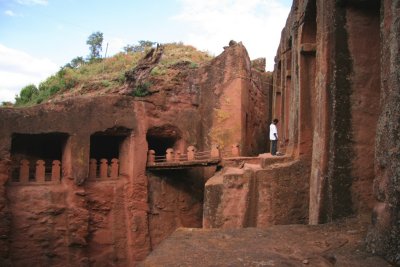 Bet Gebriel-Rafael. This church is thought to date back to the 7th or 8th century, and may originally have been a secular building (like a palace) rather than a church. |
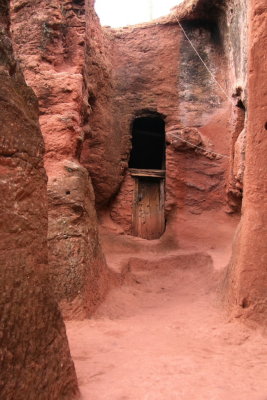 Trenches around the southeastern cluster of churches |
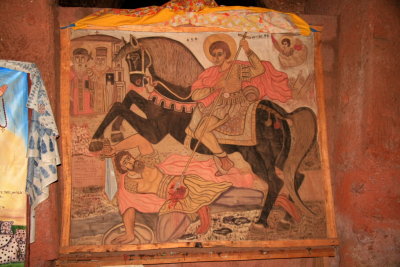 A painting in Bet Mercurios, showing Saint Mercurios killing the evil King Oleonus. |
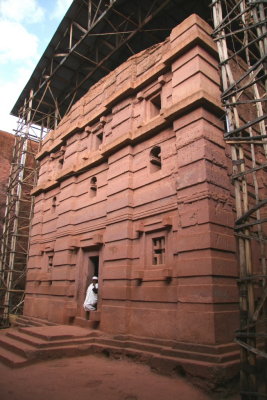 Bet Emanuel |
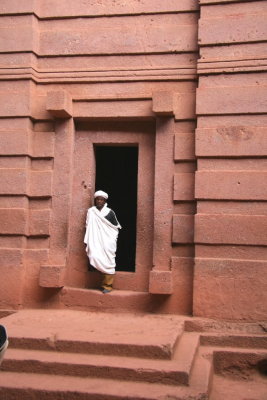 Entrance of Bet Emanuel |
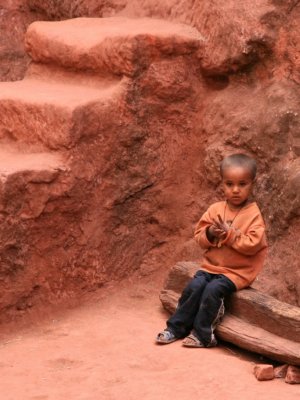 |
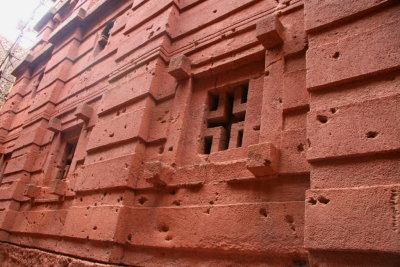 We were told that the holes in the exterior of Bet Emanuel were the result of fighting during the revlution that overthrew the Derg communist regime. |
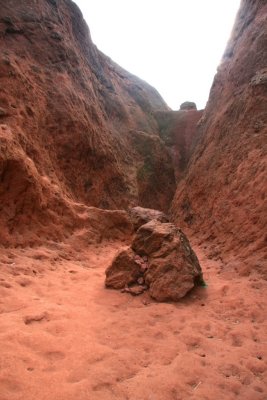 Trench in the southeastern cluster of churches |
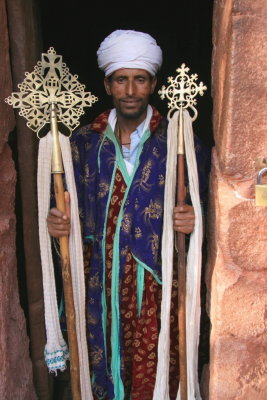 Another priest shows us the traditional crosses under his care |
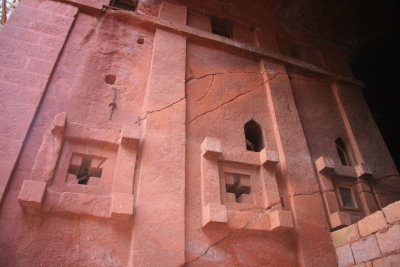 Bet Abba Libanos |
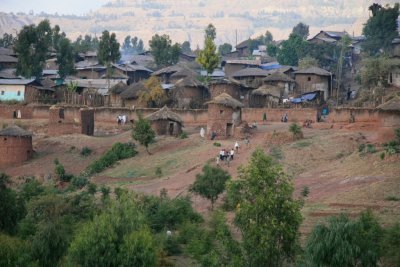 |
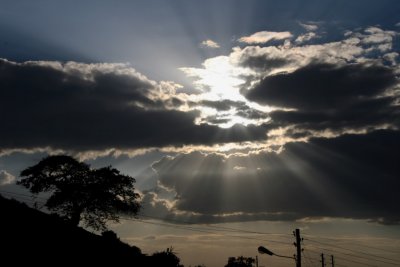 The sun streams through clouds over Lalibela |
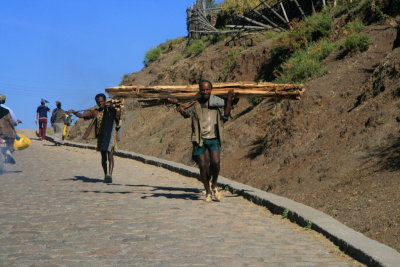 |
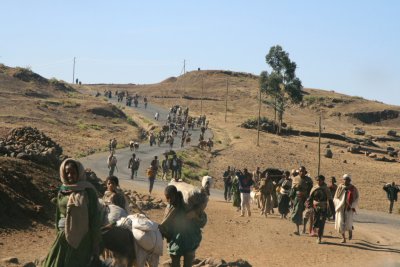 A road near Lalibela being traversed by people carrying items to market |
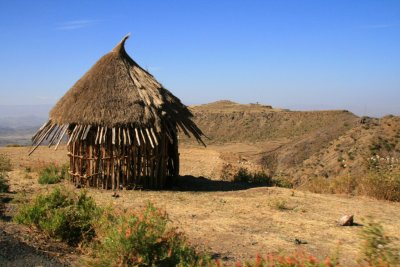 |
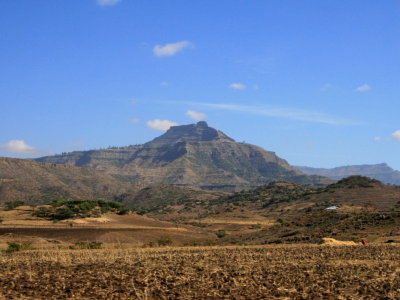 A final look at the towering mountain that is the home of Asheton Maryam |











